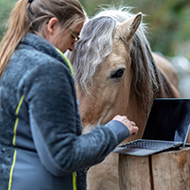Otitis externa treatment can lead to yeast overgrowth, study finds
“It was most gratifying to be able to confirm our previous observations by use of semi-quantitative cultures” – Ross Bond.
Scientists are advising veterinary surgeons to monitor for yeast overgrowth in patients that are treated with antibiotics for otitis externa, following a new study.
Although the findings of the research were expected, the phenomenon had not previously been well described in veterinary literature.
Researchers at the Royal Veterinary College (RVC) studied 29 dogs treated with fluoroquinolone or piperacillin-tazobactam for bacterial otitis externa. The dogs were mostly referred with chronic otitis externa after unsuccessful treatment using licensed products.
Ear swabs were taken before and after treatment for cytological evaluation and semi-quantitative culture.
Although bacteria counts significantly decreased after treatment, otic yeast increased, especially Malassezia pachydermatis. This outcome was more common in cases treated with piperacillin-tazobactam.
The researchers believe that increases in yeast were seen because of the antibacterial treatment suppressing bacteria that normally compete with yeast growth and inhibit it.
Further research is needed to find out if antifungal drugs or antiseptic ear rinses can be used to prevent fungal growth when antibiotics are used to treat otitis externa.
Ross Bond, professor of veterinary dermatology at RVC and corresponding author of the study, said: “We are very grateful to BSAVA PetSavers for kindly funding this study and to the owners of the dogs for agreeing to participate.
“It was most gratifying to be able to confirm our previous observations by use of semi-quantitative cultures.
“Our next goal is to find treatment protocols that prevent the fungal dysbiosis without compromising the efficacy of the antibacterial therapy in these very difficult ear cases.”
The study has been published in the Journal of Small Animal Practice.
Image © Shutterstock



 With Strangles Awareness Week just around the corner (5-11 May), vets are being encouraged to share a survey about the disease with their horse-owning clients.
With Strangles Awareness Week just around the corner (5-11 May), vets are being encouraged to share a survey about the disease with their horse-owning clients.